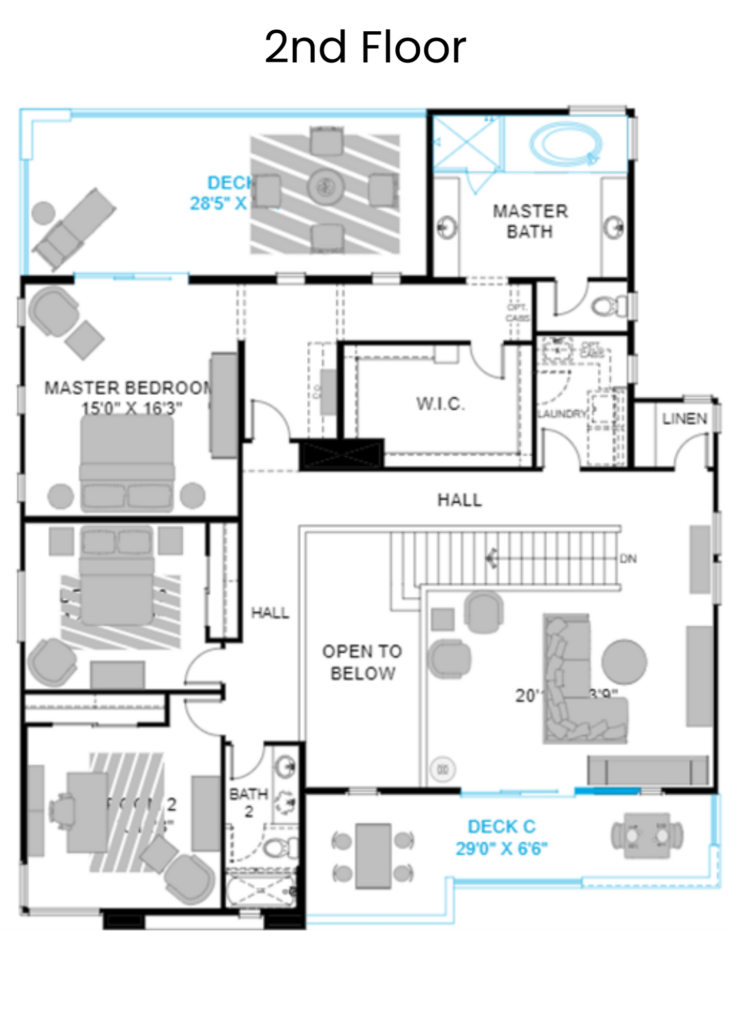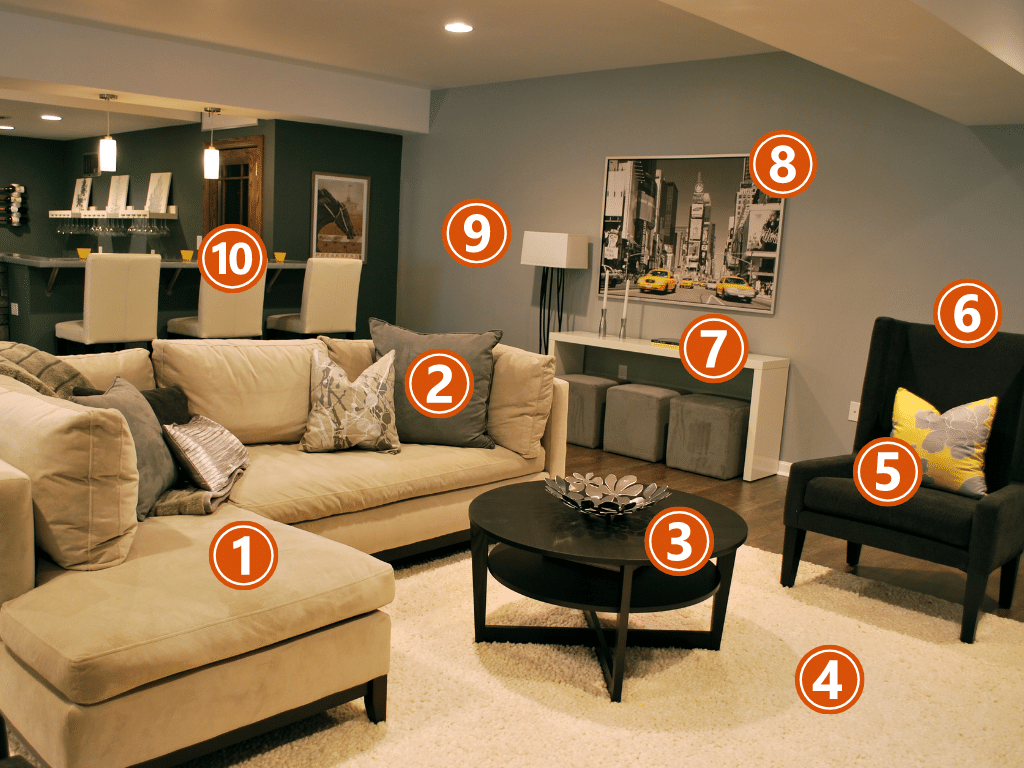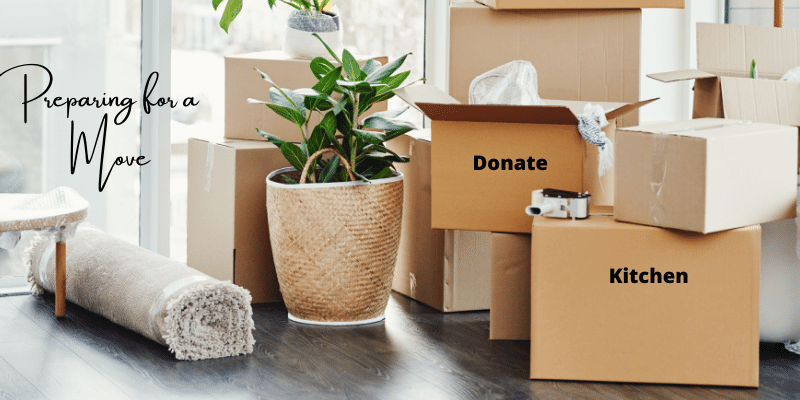How To Organize For A Move
You have decided to relocate. Great! Now what? Before you put your house on the market and before you get an estimate from a mover, read up on how to organize for a move.
Benefits of Organizing for a Move
The first step is to do some planning and organization. This includes assessing your belongings and deciding what to keep for your new house. This should be the first thing for several reasons:
- You will have a plan for your new house
- The movers can give you an accurate cost estimate
- Money will be saved by not moving (or storing) things you don’t need
- The cleanout before you list your house will be easier
- You will stayed organized during a very chaotic time
Let’s get started.
Step 1 – Create a Floor Plan
Creating a floor plan for your new house may seem like a backwards approach in how to organize for a move. But think of it this way – it will help you determine the items that are going to fit, as well as make for a smooth move-in because you will already know where everything goes.
If you are building a house, you can get a floor plan from the builder. If you a buying an existing home, ask the seller if they have one. If you can’t get a formal plan, try to get the dimensions of the rooms and sketch one. Use graph paper and draw it to scale using the dimensions. Be sure to mark where doors and windows are located.
Another option is to use online tools to create a plan; the downside is that they take some time to learn. If you want to go this route, Pottery Barn has a free room planner that is fairly easy to use.
Be sure to make a lot of copies of the floor plan, as things will evolve.
Step 2 – Plan Your New Space
Next, identify the larger pieces of furniture that you want to keep. Use the floor plan to figure out where the furniture will go in your new house.
Measure the furniture and then sketch a shape (to scale) on the floor plan that represents the item. Keep it simple: Use rectangles for sofas, tables, beds, dressers and TV stands; use circles for chairs, tables, and stools.
As you fill in your floor plan you will learn what to keep or eliminate.

Step 3 – Take notes
You have identified the big things. So far, so good. The next step in how to organize for a move is to do a room-by-room inventory. Start with an easy room, such as a living room or dining room; then work your way up to the more difficult rooms, such as the kitchen or basement.
Take stock of the contents of each room, including the contents of your closets, cabinets and drawers. Figure out what you need and what you don’t need. Refer to your floor plan for making those decisions.
With a little creativity, you can probably use a lot of what you already have in your new house. Using furnishings in different rooms is a great way to make your things look new.
This is an example of one of the rooms in our old house and how we used the items in a new way.

- 1, 3, and 6 went into our new loft area
- 2 and 8 fit well into our generation suite living room
- 4 became the rug in our family room
- 5 and 7 went into the generation suite bedroom
- 9 went to the primary bedroom
- 10 was sold since we didn’t have a need for bar height stools in the new house
It’s important to document your decisions. You will need these notes when you meet with a mover to get an estimate. Create a separate list for each room.
To make this task easier use this FREE tool that will help you easily document everything and stay organized.
Helpful Lists
As you are figuring out how to organize for a move, here are some lists that will help you decide what to keep, get rid of, and leave with the house.
What to Keep
- Furniture and decor that will fit in your new home
- Family heirlooms
- Ironing board and iron
- Laundry basket
- Vacuum cleaner
- Hangers
- Placemats – if they fit with your new decor
- Spices
- Canned goods
- Blankets and pillows – even if they are old, keep them for packing
- Dishes, glasses and flatware
- Kitchen tools and appliances
- Trashcans that are in good condition
- Paper products
- Electronics and chargers
- Bedding basics
- Comforters, bedspreads and towels- if you aren’t planning to use them in your new home, keep them for packing fragile items
- Lamps that will work with your new decor
- Tools
What to Get Rid Of
- Furniture and decor that will not fit in your new house
- Cleaning products – Only keep a few basics to clean the house after the movers are gone
- Plastic grocery bags – Take them to your local grocery store to recycle.
- Liquid hand soap and lotion
- Candles
- Clothes that you don’t wear or won’t need at your new home (for example – sweaters in Phoenix)
- Plants – Unless, you are moving locally, give them to a friend or family member to love
- Coffee mugs that have no sentimental value
- Food in the refrigerator or freezer
- Desk / junk drawer contents – start a new one at the new house
- Old pet toys
- Cookbooks you don’t use
- Boxed and bagged food that has been opened
- Artificial plants
- Bath mats and shower curtains
- Liquids – oils, vinegars, beauty products, booze (unless you plan to move yourself)
- Nail polish – it’s probably time for a refresh anyway
- Exercise and sports equipment you don’t use
- Outdoor planters
- Holiday decorations that won’t work in the new house
- Grill – or at a minimum, the propane tank
- Chemicals (weed killer, insecticide, etc.)
- Solvents, paint thinners, etc.
- Spray paint
What To Leave at the House
- Large appliances (washer and dryer, refrigerator) – They are costly to move – including them with the house can add value to the sale of your home
- Product information for items you are leaving at the house
- Window treatments
- Shelves and organizers that are attached to a wall
- Door mat – if it is in good condition
- Garbage cans
- Paint and stains that have been used in your house for touch ups
Ready to get started?
Now you know how to organize for a move. Are you ready to get started? Get your free moving planner, take a deep breath, and dive in. This is a tedious job; but the pay-off is huge and well worth your effort.
Get more tips for downsizing and moving here!


